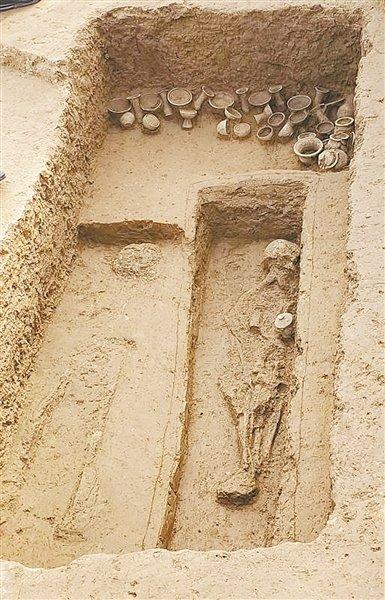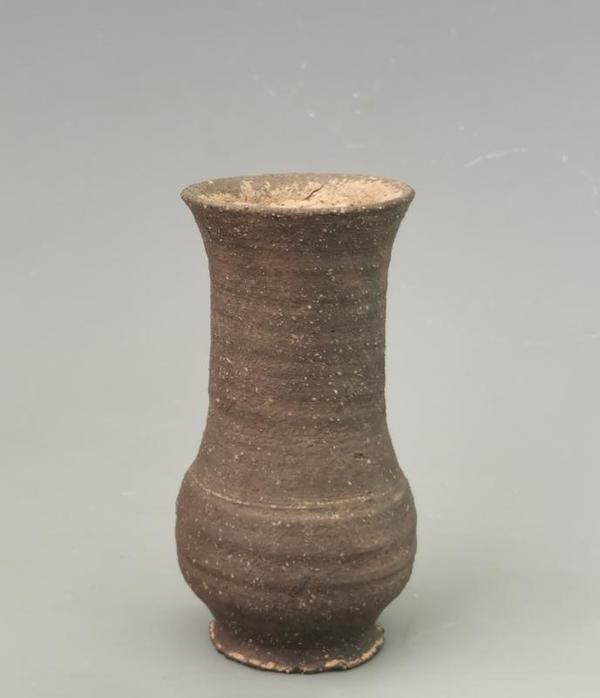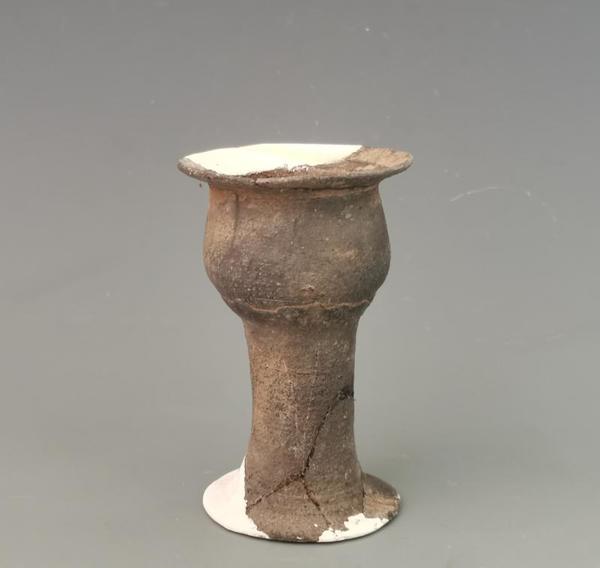"Therefore, in ancient times, the wise ruler would set up a clear hierarchical system, including nobles, high-ranking officials, low-ranking officials and ordinary people." 2,000 years ago, Jia Yi, a famous political commentator and litterateur of the Western Han Dynasty (202 BC to 8 AD), put forward the idea of "hierarchy" for the first time in China. But in fact, it is still unknowable when "hierarchy" came out in the East, because when the surplus fruits of labor appeared in primitive society, the concept of "hierarchy" naturally emerged.
Click on the video above
In early autumn, at the workshops in Yuzhuang village of Pingdingshan city, Central China's Henan province, the rumble of machinery showed us a busy and bustling scene. On September 2, we arrived at the Yuzhuang Site where archaeologists were busy working in an orderly way. In modern civilization, the primitive life of our ancestors 4,000 years ago is gradually being unveiled.
In December 2019, because of the construction of the standardized factory of Yexian county, the Consultant and Service Center for the Protection of Cultural Relics of Pingdingshan City explored the land acquired and discovered many cultural layers piled up. The land was then identified as a site of the Longshan Culture (around 2500 BC-2000 BC).
A tomb unearthed at the Yuzhuang Site. [Photo provided to Henan Daily App]
To protect the cultural relics of the Yuzhuang Site and make clear its cultural implications, with the approval of the National Cultural Heritage Administration, an archaeological team composed ofmembers from the Institute of Cultural Relics and Archaeology of Henan Province and the Bureau of Culture, Radio, Television and Tourism of Yexian County excavated the site and achieved important findings.
On October 7, 2020, Yu Hongqiang, a technician from the Institute of Cultural Relics and Archaeology of Henan Province, started working as usual. He might not expect that in this tomb numbered M10, he would unveil the life of a nobleman who lived 4,000 years ago.
A drinking vessel unearthed at the Yuzhuang Site. [Photo provided to Henan Daily App]
"Many ancient Chinese people believed in an afterlife, so many of their funerary objects are those used in daily life," said Wu Weihua, an associate research fellow from the Institute of Cultural Relics and Archaeology of Henan Province. The M10 is a tomb of the Longshan Culture with the most abundant burial objects, the highest grade and the most definite ritual system. The burial objects are mainly vessels for food and liquor with different and specific types, such as pot and plate, indicating that while most people of the tribe were still struggling for food, these early nobles had already enjoyed a lavish lifestyle.
Cultural exchanges between the Yuzhuang Site and other places also existed. Cultural relics, such as the red pottery cup, pottery sculptures, painted gu ("觚", a kind of drinking vessel)-shaped pot, plain-top gui ("鬶", a kind of cooking vessel) and jade, unearthed at the Yuzhuang Site with the lavish burial custom were influenced by the Shijiahe Culture in South China which is about 6000 years old, while the egg-shell pottery wares and the black pottery cup handle by the Longshan Culture in East China's Shandong province.
A drinking vessel unearthed at the Yuzhuang Site. [Photo provided to Henan Daily App]
Many tombs of the Longshan Culture are distributed in the Yuzhuang Site. The densely-distributed area is about 200 meters long from north to south and 70 meters wide from east to west, covering about 14,000 square meters. Nearly 40 tombs were excavated, including the large tombs distributed in groups with a fixed number of pottery vessels, reflecting the serious social stratification in the Central Plains during the Longshan Culture with a relatively mature and standardized ritual system taken shape.
Jointly undertaken by the Institute of Cultural Relics and Archaeology of Henan Province and the relevant local departments, a new round of excavation is underway at the Yuzhuang Site now, which is likely to bring us more surprises. (Chinese source: Henan Daily App Reporter: Li Yue Huang Hui Translator: Zhao Hanqing Video: Wang Junyi Proofreader: Chen Xingjie)
Related reports
The Xia Dynasty Travel Episode II The Dongzhao Site in Zhengzhou: 'Bridgehead' of the Xia Dynasty
The Xia Dynasty Travel Episode V The Puchengdian Site: Two Ancient City Ruins Discovered
The Xia Dynasty Travel Episode VI The Xinzhai Site in Xinmi: The First Capital of the Xia Dynasty?
The Xia Dynasty Travel Episode IX The Erlitou Site in Yanshi: A 'Dynasty' in a Small Village





